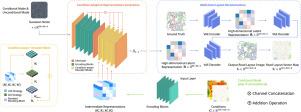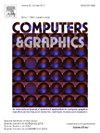CaRoLS: Condition-adaptive multi-level road layout synthesis
IF 2.8
4区 计算机科学
Q2 COMPUTER SCIENCE, SOFTWARE ENGINEERING
引用次数: 0
Abstract
Synthesizing road layouts, which define the spatial structure of cities, is critical for many urban applications. Conventional deep learning methods, however, struggle to handle both unconditional and conditional inputs, and rarely capture the multi-level complexity of real road networks. We propose CaRoLS, a unified two-stage method for condition-adaptive multi-level road layout synthesis. Specifically, the Multi-level Layout Reconstruction stage uses a pre-trained variational autoencoder to encode a real-world road layout into a latent representation and then reconstructs the image. The Condition-adaptive Representation Generation stage employs a diffusion model to generate a latent representation from Gaussian noise, or from noise combined with an optional conditioning image containing natural and socio-economic information. This design balances computational efficiency with the ability to model continuous data. To further enhance output quality, we introduce a Condition-aware Decoder Block module that integrates global context and local details, replacing the standard U-Net decoder blocks in the diffusion model. Experiments on an Australian metropolitan dataset show that CaRoLS outperforms representative general and specialized synthesis methods. Compared to the current state-of-the-art methods, improvements reach up to 36.47% and 4.05% in image and topological metrics for the unconditional mode, and 56.25% and 3.18% in the conditional mode. These results demonstrate that CaRoLS generates multi-level road layouts with strong structural fidelity and high connectivity, and provides a unified pipeline for both unconditional and conditional synthesis.

CaRoLS:条件自适应多层次道路布局综合
综合道路布局定义了城市的空间结构,对许多城市应用至关重要。然而,传统的深度学习方法很难处理无条件和条件输入,并且很少捕捉到真实道路网络的多层次复杂性。提出了一种统一的两阶段方法CaRoLS,用于条件自适应多层次道路布局综合。具体来说,多层次布局重建阶段使用预训练的变分自编码器将真实世界的道路布局编码为潜在表示,然后重建图像。条件自适应表示生成阶段采用扩散模型从高斯噪声中生成潜在表示,或者从噪声与包含自然和社会经济信息的可选条件图像相结合中生成潜在表示。这种设计平衡了计算效率和对连续数据建模的能力。为了进一步提高输出质量,我们引入了一个条件感知解码器块模块,该模块集成了全局上下文和局部细节,取代了扩散模型中的标准U-Net解码器块。在澳大利亚大都市数据集上的实验表明,CaRoLS优于具有代表性的一般和专门合成方法。与目前最先进的方法相比,无条件模式的图像和拓扑指标的改进高达36.47%和4.05%,条件模式的改进高达56.25%和3.18%。这些结果表明,CaRoLS生成多层次的道路布局,具有较强的结构保真度和高连通性,并为无条件和条件综合提供了统一的管道。
本文章由计算机程序翻译,如有差异,请以英文原文为准。
求助全文
约1分钟内获得全文
求助全文
来源期刊

Computers & Graphics-Uk
工程技术-计算机:软件工程
CiteScore
5.30
自引率
12.00%
发文量
173
审稿时长
38 days
期刊介绍:
Computers & Graphics is dedicated to disseminate information on research and applications of computer graphics (CG) techniques. The journal encourages articles on:
1. Research and applications of interactive computer graphics. We are particularly interested in novel interaction techniques and applications of CG to problem domains.
2. State-of-the-art papers on late-breaking, cutting-edge research on CG.
3. Information on innovative uses of graphics principles and technologies.
4. Tutorial papers on both teaching CG principles and innovative uses of CG in education.
 求助内容:
求助内容: 应助结果提醒方式:
应助结果提醒方式:


